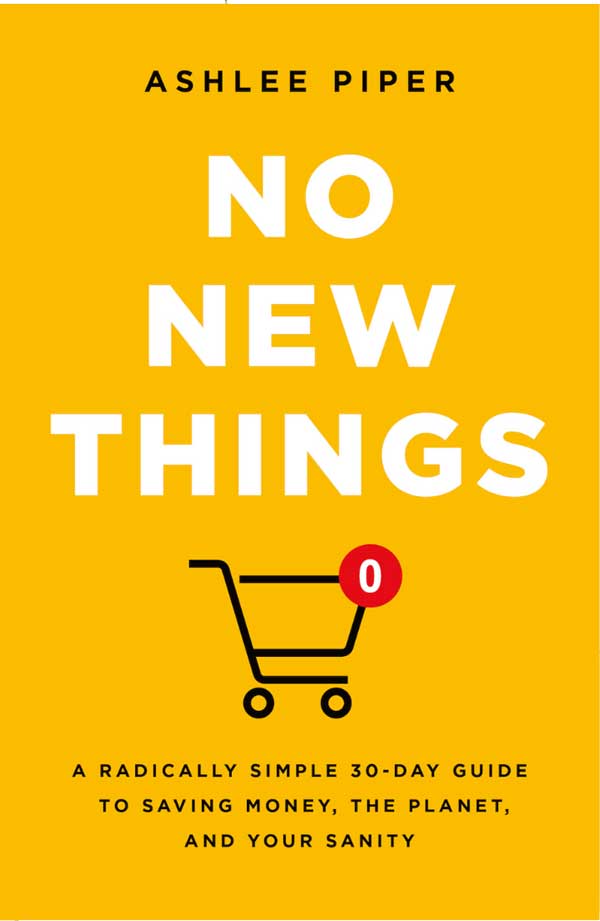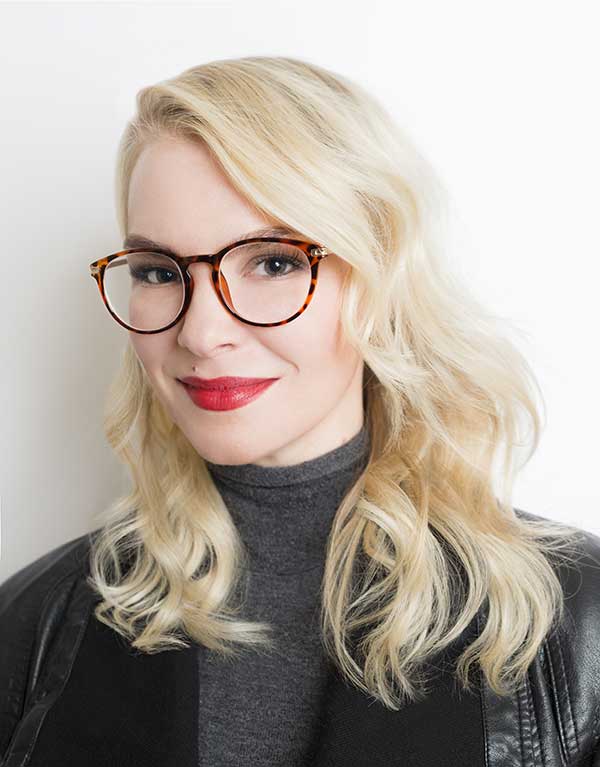Last updated October 2025
Consumers’ Checkbook chatted with sustainability expert Ashlee Piper about her latest book.
 From just-dropped Adidas sneakers to Apple’s most recent smartphone, Americans are conditioned to spring for the latest, greatest products. But overconsumption is not only bad for your finances, it’s also bad for the planet. Sustainability expert Ashlee Piper has a simple solution: Purchase only secondhand merchandise. It’s the centerpiece of her latest book, No New Things: A Radically Simple 30-Day Guide to Saving Money, the Planet, and Your Sanity.
From just-dropped Adidas sneakers to Apple’s most recent smartphone, Americans are conditioned to spring for the latest, greatest products. But overconsumption is not only bad for your finances, it’s also bad for the planet. Sustainability expert Ashlee Piper has a simple solution: Purchase only secondhand merchandise. It’s the centerpiece of her latest book, No New Things: A Radically Simple 30-Day Guide to Saving Money, the Planet, and Your Sanity.
In the book, Piper challenges readers to stop buying anything new for a month, which she claims will help them change their wasteful habits and introduce them to the joys of the secondhand, circular economy.
 Checkbook: You first tested the idea of not buying new stuff in 2013. What motivated you?
Checkbook: You first tested the idea of not buying new stuff in 2013. What motivated you?
Ashlee Piper: I was doing a lot of work on sustainability for companies and individuals, and I was seeing how much of an impact overproduction and overconsumption had on climate change. I challenged myself to not purchase anything new for a month to see if I could rankle myself out of so much consumerism. I wanted to save money and to live in a way that was more aligned with my values around sustainable living.
CB: Then you ended up not buying anything new for a couple of years!
AP: Yeah, I found that there were a multitude of benefits to not shopping new, so many that I ended up doing it for nearly two years, and still live this way today. I saved money, paid off $22,000 in debt, and enjoyed less clutter, stress, and decision fatigue. I also found that I had a lot more time, which I could spend reading, working out, and cooking food at home.
It’s estimated that we waste hours a day on stuff-related activities like cleaning, shopping, returning, storing, browsing, and disposal, and that the average American wastes 55 minutes a day just looking for things.
CB: So, if someone wants to try this “No New Things” challenge, how do they get started?
AP: The number one thing I recommend? Add friction back into your buying experience. Retailers endeavor to make the purchasing process seamless with one-click buying, saved shopping carts, and those kind of things. They make it so easy to give into your impulses and just buy.
So, remove automatic payment information from your device, unsubscribe from store mailing lists, and limit your time on social media just scrolling past ads. Ask yourself, “Am I following influencers who make me want to buy things?” If the answer is yes, unfollow them.
CB: How else can people put the brakes on their spending?
AP: If you want to buy something, take a beat and ask yourself first if there is something I already have that can fulfill the utility or the need that I otherwise would shop to fulfill?
CB: You also counsel readers to replace the dopamine high they get from buying things with a “love list” of other satisfying pursuits. How does that work?
AP: It’s about thinking about alternative activities, hopefully in the short time frame you’re tempted to buy something. They can be easy things that give you joy—doing jumping jacks, hanging out with your cat, or putting on a song and dancing to it. I had one guy who did the challenge who did 25 sit-ups every time he wanted to buy something, and he got rock hard abs!
CB: Your also encourage people to shop secondhand. Many people are comfortable doing that for cars or clothes, but are there other categories they should consider?
AP: Nowadays there are secondhand marketplaces for all sort of things, from electronics to even perfume and cosmetics. The only limit is your own personal comfort level.
CB: Since buying secondhand tends to remove some of the guilt of consumerism, can’t it also lead to another form of over shopping?
AP: Absolutely. Even the most ethical approaches to shopping open themselves up to the abuses of overconsumption. That’s because we’ve been conditioned from an early age to consume as a facet of our existence.
CB: How can you get good quality as you shop secondhand?
AP: Know your repair and restoration capabilities, or those of the experts you use such as tailors, cobblers, or furniture repair people. With clothing, look for natural fibers like silk, cotton, linen, and wool. For furnishings, seek out wood, metal, marble, and stone. Plus it’s also helpful to know your affinity for certain brands.
CB: You also counsel saving money by borrowing things.
AP: It’s funny, Americans tend to act like they’re on Noah’s Ark, thinking they need one of everything, from snowblowers to lawn equipment. But we shouldn’t think it’s cheap or weird to briefly share something. Borrowing from your neighbors is this really beautiful kind of reciprocal experience. People form deeper connections with each other when it happens!


